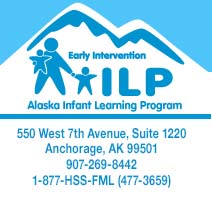
Safety Checklist: 12 Years to 18 Years
The adolescent years consist of injuries mostly due to bad decisions on the part of the adolescent. Due to a feeling of invincibility, peer pressure, and limit testing many adolescents will put themselves into potentially dangerous situations. The goal of safety teaching in this age group is to make both parents and adolescents aware of the potential risk factors for injury and to avoid these risk factors.
Helpful hints at this age include:
- The most common way for a child to be injured at this age is through sports. Most twisted ankles, broken bones or head injuries are sustained during sports. Safety should be of the utmost importance during sporting activities. Helmets, shin guards and wrist guards should be used during rollerblading or skate boarding;
- Trampolines cause more broken bones than any other toy and should be discouraged;
- Cardiopulmonary resuscitation (CPR) can be learned at this age;
- A helmet should always be worn on a bicycle and never ride with passengers on a bicycle;
- All houses should have a smoke detector, fire extinguisher and fire escape plan;
- Never use illicit drugs or associate with others that do;
- Never use alcohol or drive in any vehicle where the driver has used alcohol;
- Always bucket the seat belt in the car;
- If a gun is in the home it should be safely locked away. Make sure there are no guns available at any friend's house;
- Make sure there is safe water play. A child should never be alone in a pool or body of water. The buddy system can be taught at this age;
- There should be no diving in any shallow water. Neck injuries can occur from the child hitting the bottom;
- Sunscreen of at least 15 SPF should be used for outdoor activities;
- Insect repellent containing up to 10% DEET should be used in places where insects are prevalent. Children should be checked for tick attachments if they live in an area of tick settlements;
- Be very cautious with farm equipment. Many children are injured playing with equipment.
- Watch children near traffic. Teach children to always stop at the curb, look both ways before crossing the street, and wait for any cars coming to pass. Teach them to cross the street only when the road is clear;
- All medicines should have safety caps;
- Children should be instructed not to play with matches or lighters;
- Children should be taught animal safety. They should learn not to approach unknown animals and not to try to play with animals while they are eating;
- Children should know how and when to dial 911;
- Extension cords should have electric tape wrapped around the junctions;
- All electrical outlets should be covered;
- Parents should know CPR (Cardiopulmonary resuscitation). Call the American Heart Association at 1-800-242-8721 for information;
- Children should be taught to never eat anything unknown;
- All of these safety precautions should be present in any home, school, friend or family location.
